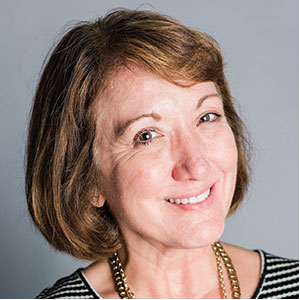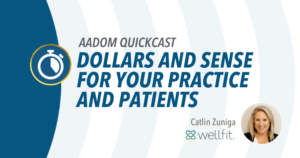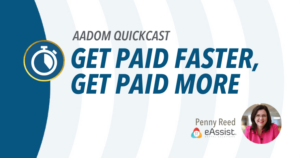Medical Billing for Dental Practices: Changing Patient’s Lives

Throughout the week I’m often asked why it’s important for our dental practice to be able to bill medical insurance.
My response is usually the same – “Why are you performing the procedure?”
Before we go forward, let’s go backward
In 1954, when dental insurance was introduced to Washington Dental Association…Opens in a new window to WSDA website homepage… by the International Longshoremen and Warehouse Union…Opens in a new window to the ILWU homepage… in Washington State (ILWU), along with the Pacific Maritime Association…Opens in a new window to PMA homepage… (PMA) with an annual maximum of $1000.00 per year, it was touted as innovative and revolutionary.
According to Delta Dental of Washington…Opens in a new tab to Delta Dental of WA article on history…, in 1955 typical dental costs looked like:
- $10 for dental x-rays
- $5 for cleanings
- $6 for an extraction
- $5 for a filling
In 2018, our annual maximum is about the same at $1000.00 per year, but the fee for those same services is 12-fold.
A 2014 abstract…Opens in a new window to the abstract… from the National Center for Biotechnology states:
“Health has been declared a fundamental human right. Oral health is an integral part of general health and, therefore, can be rightly called as the gateway of the body. The prohibitive cost of dentistry has been the main hindrance which deprives people of availing the services.”
In 2013, The U.S. Centers for Medicare and Medicaid Services…Opens in a new window to CMS homepage… redefined the term “Physician/Practitioner”:
3044.4 – Definition of Physician/Practitioner. For purposes of this provision, the term “physician” is limited to doctors of medicine; doctors of osteopathy; doctors of dental surgery or of dental medicine; doctors of podiatric medicine; and doctors of optometry who are legally authorized to practice dentistry, podiatry, optometry, medicine, or surgery by the State in which such function or action is performed.
This tells us that any licensed professional, DDS, DMD, MD, or DO can perform any medical procedure that falls under the scope of their license – state and federal guidelines apply.
A dentist performing a bone graft bills the exact same procedure code as a plastic surgeon performing a bone graft. An oral surgeon uses the exact same extraction code as a general dentist.
We all use one set of codes in medical billing for dental
What types of procedures can be billed to medical insurance?
A few common procedures include: sleepx—TMD, trauma, surgical, systemic, evaluation/management & diagnostic.
When it comes to filing dental claims, it’s not about the what, it’s about the why.
How does the treatment affect your patient’s overall health? Can you tell a story like this one?
How medical billing for dental work impacts patients’ lives
Ashley is an 18-year-old girl that presents to Dr. Smith with Amelogenesis Imperfecta and nine remaining primary teeth.
She has dropped out of traditional school due to the severity of her deformity. Ashley will finish her last year of high school at home and will not walk with her graduating class.
Upon examination, Dr. Smith finds that she is afraid to eat in fear of more teeth “breaking off in her hand.” This has caused nutrition loss and depression for which Dr. Ryan Law is treating.
The best treatment option for Ashley is to remove the remaining nine diseased teeth, reconstruct the maxillary and mandible arches with bone and tissue grafting, and place a total of eight implants (four on maxillary, four on mandible), as well as an implant-supported denture.
This will give function to the bone, which in turn, will increase nutrition and manage depression.
The long-term prognosis for Ashley following this treatment will be a fully restored maxillary and mandibular arches with complete masticatory function.
A real case, a real girl, a real young person who now has a future that she had only dreamed of.
Thanks to the internal strength provided by her clinician, this girl can now eat and smile.
Financially, her parents could not afford to pay $60,000.00 for the treatment Ashley required.
Luckily, she went to an office that billed medical insurance and they were able to get relief in the amount of over $48,000.00.
Now, let’s go forward from the 1954 introduction.
Where are we today?
That same groups that provided the first dental insurance, the ILWU and PMA, have provided a separate benefit for cases like Ashley’s that require reconstruction, bone grafting, implants, and sinus augmentation.
They knew that dental insurance itself would not be able to sustain the services needed, and instead pay 80% for medically necessary services.
The question should be – how can we help our patients improve their health and maximize their available benefits?
Get the whole team involved
Medical billing for dental practices takes effort and works best when your whole team is educated, not just your dental financial coordinator.
There are two ways to accomplish this task:
- Dental courses: Attend a two-day medical billing for dental practices course (all staff).
- On-site training: Bring an expert into your office for extensive two-day training.
It has been said that some people see their dentist more than their primary care physician and 48% of emergency room cases are dental-related.
Adding medical billing to your dental practice serves your patients with oral concerns that can either exacerbate or be exacerbated by their medical conditions.
Not every patient will be a medical case, but wouldn’t it be nice to know how to help when these cases come up?
Sources:
1. https://www.deltadentalwa.com/our-company/our-history
2. NCBI – J Int Soc Prev Community Dent. 2014 Dec; 4(Suppl 2): S73–S77. doi: 10.4103/2231-0762.146200
PMCID: PMC427810
PMID: 25558454
Meet the Author

Laurie Owens, CPC, CPB is the Director of Medical Billing Education for Devdent. She brings over 16 years of experience educating dental practices on billing medical insurance and the techniques to get claims paid.
Laurie believes that patients should be able to utilize their medical insurance for procedures due to oral systemic conditions. Through on-site training, medical billing for dentistry courses, follow-up consulting, along with Seattle Study Club, ACT Dental, and AADOM lectures, Laurie has assisted dental practices in successfully billing medical insurance to collect benefits that would have otherwise been unclaimed. Her training in medical billing has increased practice revenue and patient satisfaction.
As an AADOM member, Laurie works closely with chapters to further, educate and enlighten with tips and tricks that medical insurance does not tell you.
Contact Laurie at devdent.com.…Opens in a new window to Devdent homepage…







